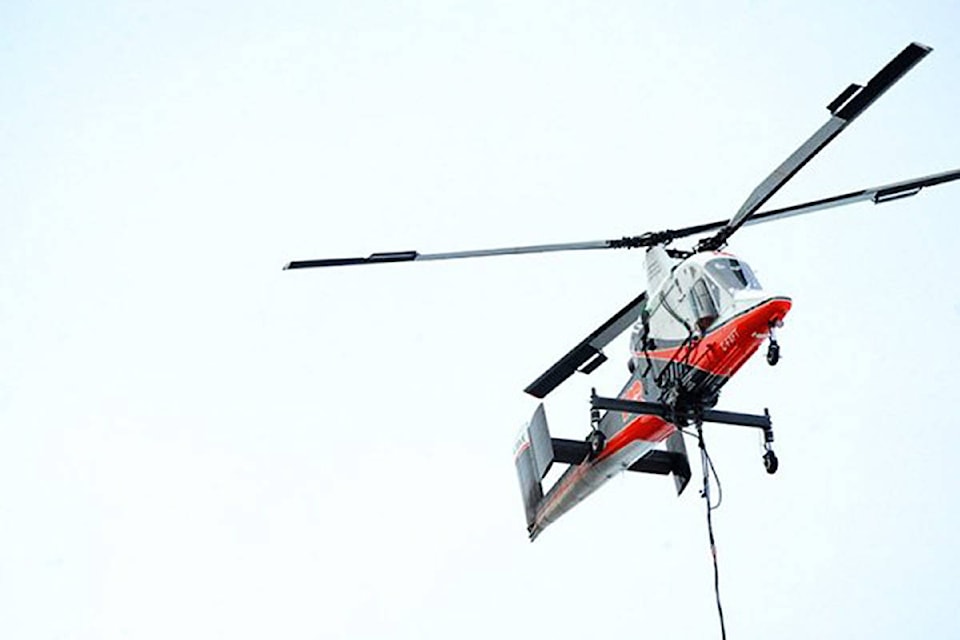The ministry is once again employing the use of heli-logging contractors to target Douglas-fir bettle infestations near Williams Lake.
A third year of helicopter logging operations in the Cariboo is expected to start this week to help minimize the spread of Douglas-fir beetles on Crown land.
Helicopter logging flights are expected to begin as early as Dec. 20, 2018, in the Esler area. Once work at that site is completed, operations will move to the South Lakeside area and then to a site further south off Anderson Road. All of these helicopter logging activities should be completed by mid-March 2019.
These natural forest pests normally attack small groups of trees. A significant infestation can weaken and eventually kill a tree over a period of about one year. However, helicopter logging (to selectively remove infested trees and protect other trees nearby) and related containment treatments have helped slow the spread of the beetles in the Williams Lake area over the past two years.
Read More: Heli-logging aimed at Douglas-fir beetle infestation continues
Read More: Williams Lake Community Forest focuses on fir-beetle, wildfire mitigation and education
These logging activities are being conducted under the direction of the Ministry of Forests, Lands, Natural Resource Operations and Rural Development. Monitoring of Douglas-fir beetle infestations within previous treatment areas has identified fewer trees currently under attack, so the helicopter logging project is being expanded to new sites.
For safety reasons, members of the public should stay away from active harvesting areas. They are also reminded that unmanned aerial vehicles (drones) must not be operated anywhere near the harvesting areas, since doing so can endanger the safety of pilots and workers on the ground.
Douglas-fir beetle infestations tend to be cyclical. The last major outbreak in the Cariboo-Chilcotin Natural Regional District (prior to the current outbreak) peaked in 2008, covering about 68,550 hectares.
According to the ministry’s latest mapping data (based on aerial surveys conducted in the summer of 2018), Douglas-fir beetles affected 48,584 hectares within the Cariboo-Chilcotin Natural Resource District in 2018. About 45,862 hectares were affected in the same region in 2017, with 53,311 hectares affected in 2016.
Do you have a comment about this story? email:
editor@wltribune.com
Like us on Facebook and follow us on Twitter.
